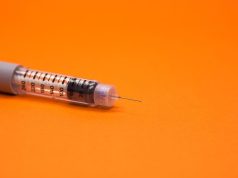Treatment costs less than extended-release naltrexone without negative impact on outcomes
MONDAY, Dec. 17, 2018 (HealthDay News) — Buprenorphine-naloxone is cost-effective compared with extended-release naltrexone for treating opioid use disorder, according to a study published online Dec. 18 in the Annals of Internal Medicine.
Sean M. Murphy, Ph.D., from the Weill Cornell Medical College in New York City, and colleagues evaluated the cost-effectiveness of daily oral buprenorphine-naloxone versus monthly extended-release naltrexone injections for treatment of opioid use disorder. This cost-effectiveness analysis was conducted alongside a randomized clinical trial of 570 adults in eight U.S. inpatient or residential treatment programs.
The researchers found that during the 24-week intervention, extended-release naltrexone cost the health care sector an average of $5,317 more than buprenorphine-naloxone. This significant difference was driven by the longer detoxification period required for extended-release naltrexone induction and the higher cost of the medication, even when considering savings from fewer required follow-up visits. However, the higher cost of extended-release naltrexone was not associated with significantly better outcomes measured in quality-adjusted life-years (QALYs) or abstinent years gained. Extended-release naltrexone had nonsignificantly higher average total costs for the health care sector at 36 weeks and total societal costs at 24 and 36 weeks. Further, at 36 weeks, the differences in the number of QALYs and abstinent years gained remained small and statistically nonsignificant.
“Data from this clinical trial indicate that buprenorphine-naloxone is typically preferred as a first-line treatment when both options are clinically appropriate and patients require detoxification to initiate extended-release naltrexone therapy,” the authors write.
One author disclosed financial ties to the pharmaceutical industry.
Copyright © 2018 HealthDay. All rights reserved.








